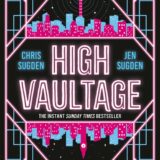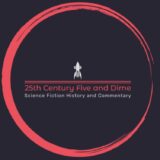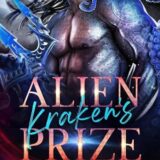CLUBHOUSE: Review: Neo-opsis Magazine issue #34

OBIR: Occasional Biased and Ignorant Reviews reflecting this reader’s opinion.

Neo-opsis Magazine – Issue #34, Fall 2022
Published out of Victoria, British Columbia, Canada.
Editor: Karl Johanson. Assistant Editor and Art Director: Stephanie Johanson.
Cover: It’s Lonely Out in Space – by Karl Johanson
Editorial:
Premise:
The planet in “Planet of the Apes” is NOT the Earth.
Review:
It is, instead, a parallel Earth. Using astronomical clues in both the movie and the original book by French author Pierre Boulle, Karl is able to narrow down the particular star it orbits to two possibilities. Hmm, could be…
Since both the novel and the movie are satires on SF tropes, I don’t think the true nature of the planet counts for much, though it is cool to speculate. What matters most, at least commercially speaking, is the sheer fun of an ape civilization supplanting a morally inferior human culture. Makes for a successful franchise.
Here’s a bit of trivia. Pierre Boulle is perhaps better known as the author of the novel “The Bridge on the River Kwai” which the movie of the same name was based on.
Fiction:
Arboghasz Dal Alexander – by Matthew Hughes
Premise:
The trouble with adopting a pseudonym to cover your nefarious activities is that sometimes someone even more nefarious, someone universally loathed, hated and despised, quite legitimately has the same name and being mistaken for him can get you killed.
Review:
The name was adopted by a mastermind criminal because often the ludicrous is a minor variation of the big lie, so outrageous it must be true, and therefore beyond suspicion. Except, in this case, it draws attention, like flies to a corpse, because there’s a huge award involved, and because a lot of people on many planets want revenge. So, a simple case of stealing a priceless artwork and giving it to the buyer who contracted for it becomes hopelessly complicated. What Arboghasz has to do is track down the real Arboghasz and hand him over to the authorities if he is to remain alive to collect the reward. Unfortunately, his prey will stop at nothing to remain hidden, including murder.
The protagonist is a man of near-spherical dimensions. He likes to eat, and is accustomed to fueling his belly with the proceeds of his sophisticated and normally highly successful criminal career. In this respect he resembles many a fictional literary detective who usually possess one or more distinctive physical quirks. That’s the crux of the matter. Though a criminal, the fake Arboghasz has to transform himself into the greatest detective yet produced by the human race if the mystery of the real Arbogasz’ location is to be solved.
The visual picture which sprang to mind as I was reading the story was Sidney Greenstreet as the fat man “Gutman” in the film version of “The Maltese Falcon,” only taking on Humphry
Bogart’s role as the Detective Sam Spade. I think this story’s attention to quirky details on the part of individual characters greatly aided this impression. The result, like the movie, is an enjoyable romp, albeit in the form of speculative fiction taking place on various planets, including an insignificant backwater called “Old Earth.”
In short, it falls into the sub-genre of cross-genre SF/Mystery, and successfully so. Sidney Greenstreet in my thoughts, I found it most entertaining.
The Machine Man – by Andrew Knighton
Premise:
A repairman with an implant which allows him to thought-control machines discovers his brain has adapted to read human minds.
Review:
People with eidetic memory often seek solitude, since even a chance remark can stir up multiple associations which in turn trigger a kaleidoscope of memories that quickly get out of hand. Literally, the victim cannot control their thoughts. Imagine, then, the consequences of being able to read the thoughts of a multitude simultaneously, and worse, influence their mood. Those who advocate that nano-tech and A.I. in combination should lead to enhanced brains capable of communicating directly through thought alone are already out of their tiny little minds.
Truth is a lot people are hard put to put up with excessive stimulus from verbal and media communication. It gets to be too much for them, and they long to retreat to a simpler age. Garvey, the space colony mechanic, is already at that stage. His sudden ability to listen to every colonist’s thoughts threatens to send him over the brink into madness. He’s not the only one going crazy. Failing resources are driving the colonists toward despair and panic. Turns out Garvey has the potential to save them, but first he has to figure out how to save himself.
This story is itself a thought experiment about the coping mechanisms we will all need to develop to handle the sort of super-brains being promised us for the near-future. I’ll just comment that if we do advance mentally in the fashion depicted herein, psychologists and psychiatrists will be busier than ever. Frankly, we’re better off as we are. I believe that’s the main point of this story. It’s a hard, chilling look at the price we will pay for progress. Consider it a warning. A very useful piece of science fiction, indeed. Read it and take in its message. Be foolish not to.
Lightspeed Traffic Jam – by John Taloni
Premise:
One twin on Earth, one aboard a faster-than-light spacecraft, both able to communicate with each other via telepathy. What could go wrong?
Review:
Aliens. They resent, with good reason, the intrusion into their space. They decide to punish the astronaut. Pity it involves collateral damage, namely the extinction of the human race. Though time is different for both of them, Astronaut Jim and his twin Raymond have a bit of time to talk up a solution. Not much time, though.
The source of the problem is a consequence of developing FTL technology, one that seems obvious in hindsight yet I don’t recall ever coming across it in SF fiction before. It’s a pretty good argument for NOT developing the technology, at least not till certain other technologies catch up first. Essentially an object lesson in not ignoring the obvious and being sure to explore every conceivable possibility before committing to action. Alas, not something we humans are noted for.
Despite the fate of the human race resting on the outcome, this story is light-hearted compared to the previous one. Very much a concept piece, it is a scientific puzzle waiting to be resolved by the correct application of appropriate science, if such can be devised. I like the analogy about learning how to drive. Makes the story very accessible to most readers. Old-fashioned, but original and fun.
Visiting the Big Sandbox – by Jim Lee
Premise:
Literally. Visiting the big sandbox where the alien diplomats live.
Review:
Kamilah is only ten years old. She thinks adults, including her parents, are stupid and disrespectful in their dealings with aliens. She, of course, is much more to their liking.
The sandbox is not a litterbox. It contains sections, each filled with soil and rocks from different locations on Earth; for example, material from the Gobi Desert, or the Mississippi river delta. Hard to tell the aliens’ precise relationship with their environment as they are enclosed within massive, burrowing robot-exoskeletons. Still, Kamilah feels perfectly at home with them.
More of a vignette than a story, I’m not quite sure what it implies. Youthful innocence always a refreshing change of pace for diplomats? Something we should try at the U.N.? There are no hints of justifiable paranoia. Perhaps it is a bit of a fable suggesting we can get along if we celebrate and enjoy our differences? Pleasant, if true. Hopeful. Optimistic SF.
And yet, and yet, I note all the alien embassies are placed on an island in the middle of nowhere. Hmmm…
Homeplus – by Liz Westbrook-Trenholm
Premise:
The moon inhabited by peace-loving turtle-like aliens called Sklikns has been colonized by humans for a couple of centuries. Turns out the Sklikns have a long term biological cycle of some danger to the nature of humanity itself. The humans have to leave.
Review:
Glorious is a diplomat returning to her mother’s farm on the alien Moon. First time she’s been back in twenty years. Nobody is going to like what she has to impart. The readers are the first to know. The question then becomes, what is the nature of the threat? What are the SKlikns about to evolve into?
But the answer is delayed as first Glorious had to deal with her tough-farmer sister Vic’s angry reaction to the news. Then a small horde of angry colonists descend on the farm, all of them
blaming Glorious for what’s happened because she was one of the negotiators. Interesting aspects of both family and small-group dynamics are explored. No wonder Glorious was reluctant to return home. She knew how the colonists would respond.
Turns out it doesn’t matter. The Sklikns can hold off no longer. They respond to their primal urges. The result is… unexpected, at least by me. I’m not well read enough in science fiction to know if the climax of this story is totally original, but it is certainly highly original. And very, very science fictional, taking into account the surprising discoveries in the biological sciences that have become routine in modern times. Back in the pulp era it would probably have been considered too wild a concept. Today, it approaches plausibility.
This story could not take place on Earth. It requires the presence of beings with a truly alien physiology like nothing our species has ever encountered before. This in turn requires a brilliant stroke of imagination on the part of the author, adding something new to the canon of basic science fiction concepts. I may simply be displaying my ignorance here, but the fact remains I was blown away by the concept underlying the story. It impacted me like a powerful epiphany as to what is possible in speculative fiction; I suppose in a similar manner to the way readers reacted to the Martian character Tweel in Stanley G. Weinbaum’s “A Martian Odyssey” back in 1934, something new and fresh and dazzling in its portrayal of a truly-alien alien.
At any rate, that’s how this story strikes me. I consider it the stand-out story in this issue, a superb example of first-rate speculative fiction.
Tea for Two – by Xauri’EL Zwann
Premise:
Annabelle is the last human alive on the earth. She’s quite content in her old-fashioned cottage. But now the virtual civilization off Earth wants to deconstruct her beloved planet in order to absorb it. She can’t allow that, can she?
Review:
Of course, I am reminded of “Hitchhiker’s Guide to the Galaxy,” but this isn’t satire. It is an interesting and poignant examination of the consequences of technology so advanced as to constitute a form of magic, to paraphrase Clarke’s famous comment. Once the premise is made clear, the story slides into an examination of what it is that defines humanity, and even life itself.
For Annabelle, everything is concise and clear. Neither virtual life nor A.I. mentality is human, both being soulless and lacking in flesh and blood. Yet, just as she manages to instill doubt in the ruthless cosmic planners, she begins to wonder if she is too dogmatic in her refusal to accept their self-awareness as “real.” Not even her cottage considers itself less than human. She finds doubt painful. She’s not used to questioning her motives. But there’s too much at stake to give up. And so the debate continues.
Yes, it is possible to present a philosophical debate in a context of rising tension and impending disaster. A bit grim, a bit sad, and altogether intriguing. I like to think it will encourage most readers to want to remain human and not dream of transforming into the techmind of the future so often prophesized by the gosh-wow boys. Just another scam in my opinion. This story another useful warning about the future we shouldn’t want if we know what’s good for us. Or so I like to think.
In the Shade – by Jermy Schnee
Premise:
Giant plants have taken over the world. Is it still possible to fall in love?
Review:
Sun Blotters they’re called. So huge their upper canopies blot out the sun. 18-year-old Anna is lucky. She grew up in a small town where the soil isn’t suitable for Sun Blotters. Trouble is, she’s been given as wife to 17-year-old Wyatt, a freak outlier who milks the Sun Blotters for fuel to drive the machines that keep lesser colossal plants at bay. He lives in the wild. That means she’s condemned to live with him. All she can think about is escaping back to town.
A metaphor for the consequences of climate change, I’m guessing. Humans survive two ways. Either by living in a state of denial and refusing to adapt, or by embracing the new reality and exploiting it as best they can, no matter what demands it makes. Which is the better way? Which guarantees survival? Or are we doomed no matter what we do? A question of some importance.
This story reminds us we are embraced by our environment whether we like it or not. To paraphrase Trotsky “You may not be interested in Mother Nature but Mother Nature is very
interested in you.” Our future, and that of our descendants (if any), rests entirely on what decisions we make today. This story makes that very clear. Thought-provoking, to be sure. In a gentle way, as if to imply there’s still time enough to come to the right decision. One hopes.
Nonfiction:
Assorted news re: awards, fandom, movies, space exploration, etc. And, as usual, a fascinating article on aspects of the Periodic Table, on this occasion Copper. More fascinating than you would expect. Good stuff, copper.
CONCLUSION:
A pleasing mixture of well-written “message” speculative fiction which leads the reader to speculate further. Every story manages to be both entertaining and intellectually fascinating.
Excellent issue of a habitually excellent magazine.
Find it at < Neo-opsis Magazine #34 >










